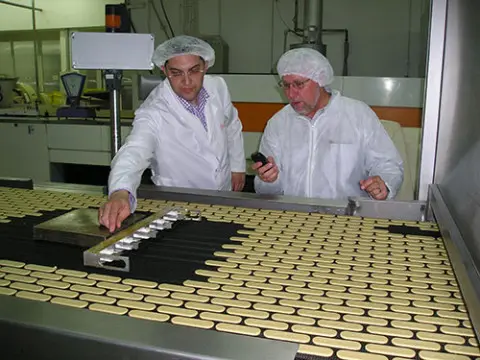If your bakery production line is producing loaves with burned edges and raw centers, you’re not dealing with a minor inconsistency. You’re confronting a thermal imbalance that can compromise product quality, reduce yield and strain your customer relationships. These issues typically originate from uneven temperature distribution across oven zones – something you can’t fix without data. Oven temperature profiling solutions for bakery production lines from Reading Thermal turn guesswork into actionable insight.
Understanding the Anatomy of a Heat Imbalance
When edges of your baked goods turn out dark and crisp while the center stays doughy, it’s often the result of heat migrating too quickly to the outer portions of the product. The problem can be worsened by incorrect airflow, fluctuating zone performance or poorly controlled heat transfer in specific sections of the oven. Without a precise understanding of where and why that imbalance exists, it becomes nearly impossible to correct.
Traditional baking diagnostics rely too heavily on operator experience or visual inspection. That might suffice in a small operation, but in commercial and industrial lines, the margin for error is narrow. Profiling the oven zone by zone allows bakeries to detect hot and cold spots, pinpoint exactly where those discrepancies occur, and adjust the thermal profile to deliver even baking across the entire product.
How Targeted Profiling Identifies Problem Zones
Every zone in a commercial oven plays a specific role in the bake curve – from initial set to moisture release to crust development. When one of these zones performs inconsistently, it skews the entire baking process. For example, if the front zone overheats while the middle zone struggles to maintain its target, edges of the product may set too fast, preventing proper rise and interior development. The result? A scorched exterior and undercooked interior.
This is where Reading Thermal’s SCORPION® 2 Profiling System becomes essential. Equipped with sensors that travel through the oven alongside the product, the SCORPION® 2 collects data on temperature, heat flux, and air velocity in each zone. Its Temperature Sensor Array and Heat Flux Sensor are particularly effective at showing whether excessive radiant heat or uneven convective flow is to blame. With this information, your team can fine-tune each zone – adjusting dampers, changing belt speed or tweaking burner settings – to strike the right thermal balance.
Preventing Inconsistencies Before They Start
Targeted zone profiling doesn’t just help you fix problems; it helps you prevent them. Over time, oven components wear down, airflow patterns change and burners lose calibration. If you’re not profiling your oven regularly, these subtle shifts can go unnoticed until they affect your entire production run. Consistent data from zone-by-zone profiling helps you catch early signs of imbalance and make incremental adjustments before quality suffers.
Reading Thermal’s SCORPION® 2 enables you to store and compare profiles over time. This makes it easier to track the impact of maintenance, new recipes or equipment upgrades. It also serves as a training tool – helping new operators understand how different zone adjustments affect the end product.
When Data Meets Dough: Better Products, Fewer Losses
Zone profiling gives bakeries a direct line between data and product quality. It replaces vague assumptions with measurable outcomes. If burned edges or raw centers are compromising your output, targeted profiling shows you where the heat is coming from – and where it’s falling short. With that knowledge, you’re no longer baking blind.
Reading Thermal’s suite of oven temperature profiling solutions for bakery production lines allows industrial bakeries to optimize each step of their baking curve. Instead of settling for “good enough,” you can fine-tune your line until every product meets the same high-quality standard. Learn more by contacting us online or giving us a call at 610-678-5890.

